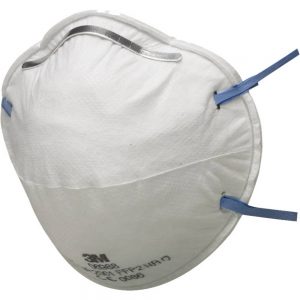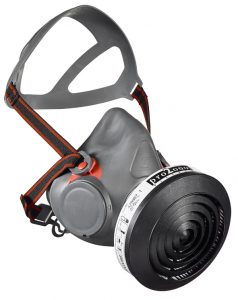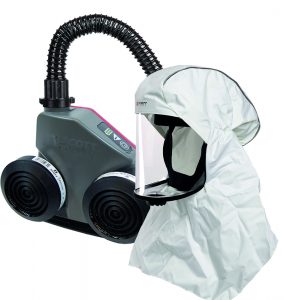As shortages of respiratory protective equipment (RPE) appear to be widespread across the NHS, the UK faces a huge challenge of trying to buy enough RPE to protect our healthcare workers. The latest understanding is that the pandemic will continue for another 3 months so we look which types of masks are available and how much they’re costing the NHS.
Disposable Masks with No Filter
These masks are currently the most popular amongst healthcare workers. Costing about £1 per mask, these disposable masks offer protection from hazardous materials.
We would only recommend wearing these masks for the short-term because the moisture from the mouth reduces the protection of the mask. If a coronavirus sufferer sneezed or coughed in your face while wearing it, it would still offer OK protection (and it’s better than nothing). However, because the mask is small, particles from the virus could linger on the face.
Disposable masks need to be disposed of regularly, maybe even a couple of times per shift. Given the amount of workers using these masks, there’s huge pressure on the NHS to prolong supply of these masks. When the virus becomes under control, think of the waste, there’s going to be a huge amount of disposed masks.
Advantages – A cheap method of respiratory protection
Disadvantages – Continued use is expensive; low protection factor; huge amount of waste; it should not get wet as it will potentially absorb the virus.
Overall Cost – Based on a worker using a minimum of 4 masks per shift, four days per week, the approximate cost for wearing disposable masks over 12 weeks would be around £172.
Reusable Respiratory Masks
Reusable respirators such as the AVIVA40 include a facepiece mask and a filter. The tight-fitting facepiece is secured to the head using straps.
After a relatively inexpensive initial purchase, the mask only needs to be replaced once the mask is damaged. Particulate filters for protection against the virus should last a considerable time and therefore the industry recommendation for replacement is about once per month for continual use.
The P3 filter provides the highest level of protection because it filters the air and has a rubber mouthpiece meaning that no droplets from a cough or sneeze could get into the mouth or nose. It also has multiple straps that ensure it is fitted tightly to a person’s head and face.
Overall Cost – Based on a healthcare worker using their respiratory mask four shifts per week, the approximate cost for wearing reusable masks over 12 weeks would be around £55.Cost of Respiratory Mask – £25. Replacement P3 Filters – £30
Advantages – Cost-effective; P3 filters offer maximum-level of protection.
Disadvantages – Requires a face fit-test to ensure a good fit; Can’t be worn with facial hair.
The Trouble with Stubble
The way you wear a respiratory mask is crucially important because unless it is tight to the nose and mouth contaminated sneezes and coughs will get through – or linger on the surface.
For workers with any sort of facial hair such as stubble, beards, moustaches or sideburns, then they will simply fail a face fit-test. It is not possible to effectively use a gas mask, half-mask or any negative pressure respirator because these tight-fitting facepieces will not achieve a seal around the face with facial hair.
Powered Air Respirators (PAPR)
Although there may be a higher capital expenditure when choosing to implement PAPRs, this expense may be justified in the sense that PAPR respiratory systems have the following advantages:
- > Eliminates the cost and organising of regular face fit-testing
- > Negate the need for shaving – hospital trusts cannot enforce religious beards to be shaved off and therefore PAPR is the only option for these workers
- > Increase comfort to the wearer – These systems are powered by battery packs and circulate cool, clean air to the head top to avoid misting. Breathing resistance is also lower in PAPR which means that the wearer can breathe more comfortably
- > More protection – Powered air head-tops provide more than just mouth and nose protection. Some head-tops cover the whole face whilst advanced systems provide full protection to the head, neck, and shoulders
- > Systems can be interchanged between users – Once disinfected, the hose and blower can be handed to a colleague
- > Low cost of ownership – The PAPR blower should last for at least 3 years
Overall Cost – Based on a healthcare worker using their respiratory mask four shifts per week, the approximate cost for wearing PAPR over 12 weeks would be around £85. PAPR System – £25 (Lifetime cost of £900 /36 months); Replacement P3 Filters – £60
Conclusion
Disposable masks may appear to be the cheapest option but quickly become expensive over time. Once you start scaling up the cost to provide enough masks to protect an entire ward, the costs become eye watering. Not to mention the demand placed on the NHS procurement team having to continually replace these masks.
Although there may be a higher capital expenditure when implementing PAPRs, this expense may be justified in the sense that PAPR respiratory systems have a long list of advantages compared to the alternatives.







